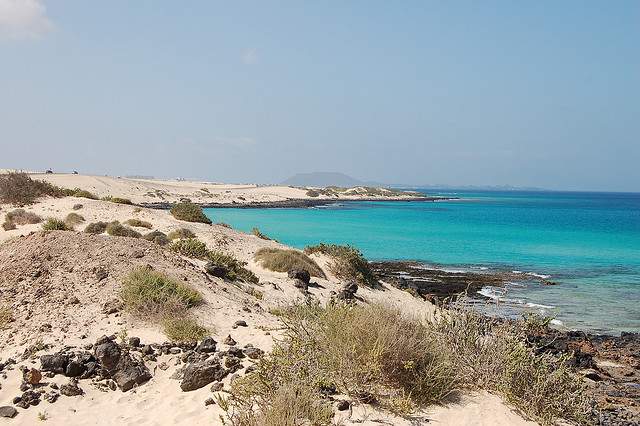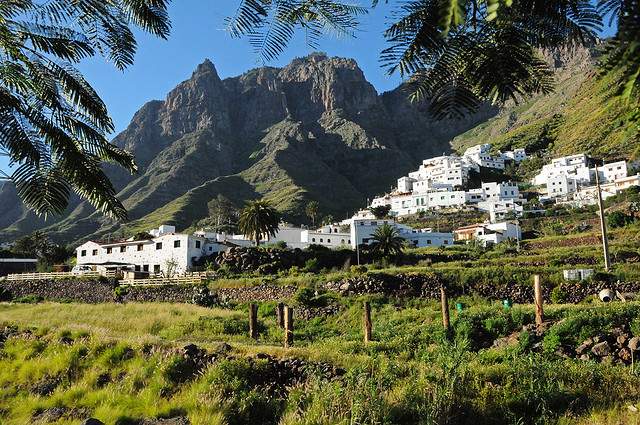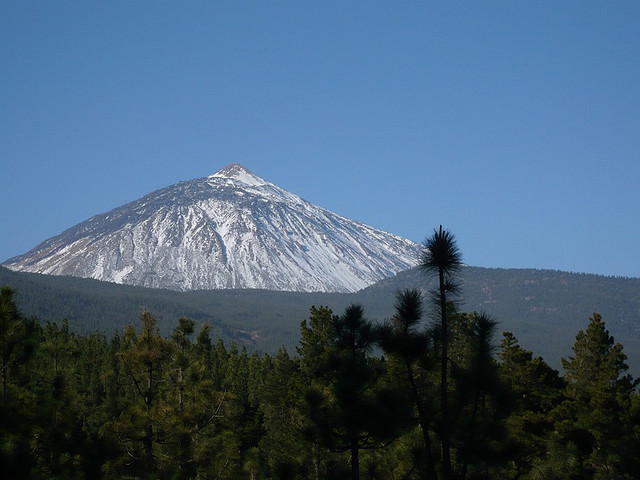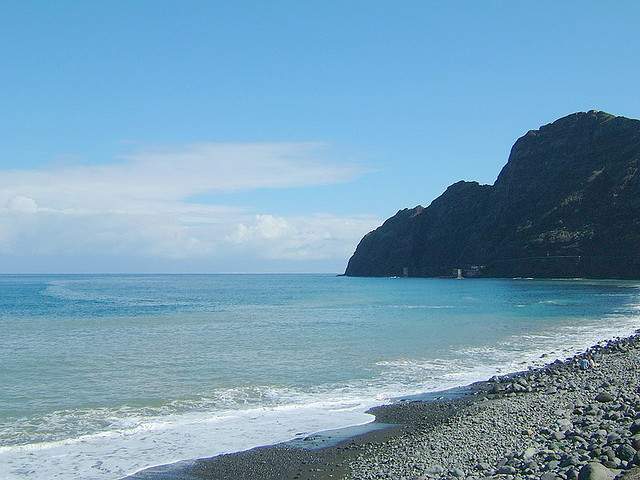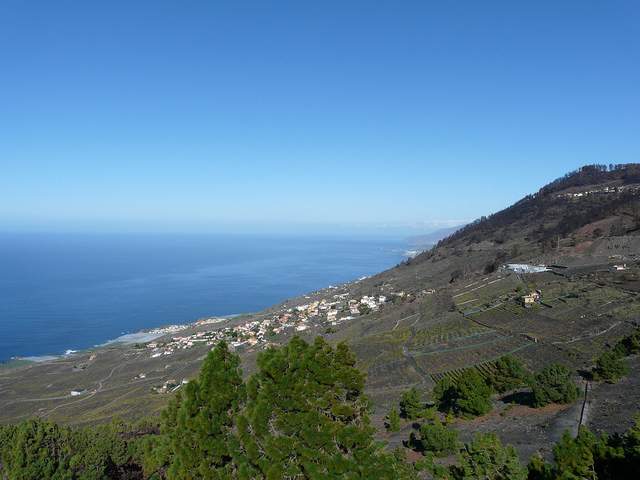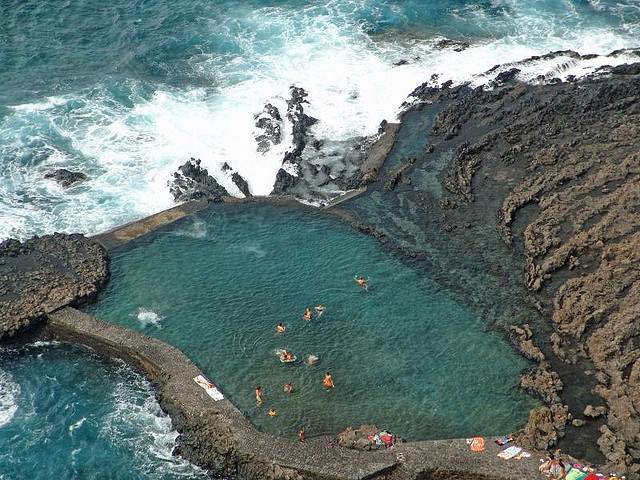If you’re looking to go above and beyond your typical paradisiacal island vacation and want to experience much more than just pristine sandy beaches, the astonishing diversity and extreme landscapes of the Canary Islands offer many kinds of paradises to relaxed vacationers and adventurers alike.
A group of seven Spanish islands situated right off the coast of northwestern Africa, the Canaries are blessed with a warm beach-going climate all year round. Their tropical location make them a prime getaway spot for Europeans during the winter but even with the islands’ increasing tourism and popularity, it’s still possible to explore unspoilt areas rich with native flora and fauna, such as their wild beaches, mountainous regions, and national parks.
Most notably, the islands form a formidable volcanic archipelago. Their landscapes include four of the highest peaks within Spanish territory and some mightily bizarre yet inspiring scenery: from black sand beaches with soaring cliffs to rugged, red, Mars-like panoramas. The breadth of these landscapes evokes regions from every corner of the planet, and even, sometimes, from others. Each of these seven islands is a completely different world, and adventure, in itself.
Lanzarote: A walk on the moon
Prepare to find yourself awe-struck at the extra-terrestrial landscapes of this extraordinary island, which boasts about 300 volcanoes. Even though all seven islands are of volcanic origin, Lanzarote has most recently felt the devastating effects of its volcanic eruptions in the 18th and 19th centuries, when some 200 square kilometers were scorched and covered in ashes.
This region of petrified lava make up the National Park of Timanfaya and its Mountains of Fire, where visions of a lifeless, prehistoric (or even apocalyptic) earth, with enormous craters of an incandescent red color, can be seen on a bus or even camel tour. Its unique atmosphere has made it a UNESCO Biosphere Reserve and one of the most impressive natural parks in all of Spain.
As the island is quite small, you can easily travel to its extremities and go on excursions by car. Heading north, you’ll pass La Cueva de los Verdes, or “Greens’ Cave,” created 3,000 years ago by lava streaming from an eruption, and also the Jameos de Agua, a network of subterranean caves and lakes and home to a rare species of blind crabs. At the northernmost point of the island, the prow-like Mirador del Rio extends over the ocean. Here at this windy spot, you can experience a magnificent panorama of the ocean and of the neighboring islet La Graciosa, which is a very recommendable ferry destination.
Not only is Lanzarote home to bizarre and fantastic landscapes but also to beaches which can compete with any found in the tropics. The best ones are located in the southern part of the island. Playa Blanca, one of the most popular, has long stretches of clear sand and crystalline waters, and so does the nearby Las Coloradas beach. For a less touristy one, check out Papagayo, a beautiful large cove encircled by impressive cliffs.
Getting there: Flights to Lanzarote from most major cities in Europe, as well as from the other islands, arrive at the Lanzarote Airport 5 km away from the capital, Arrecife. Ferries arrive at Playa Blanaca from Fuerteventura, La Palma, Tenerife, and Gran Canaria. Some of these ferries are legs of an overnight ferry from Cadiz, Spain.
Fuerteventura: Sand dune beaches and camels
The oldest of the Canaries, this island is known for its kilometers-long beaches of white sand and shallow, clear water, perfect for water-skiing, wind-surfing, fishing, or sailing. It has the longest coastline of all seven islands, spanning 340 kilometers, and is easily accessible by a 40-minute ferry from Lanzarote.
Fuerteventura is also notable for its dry climate, giant white sand dunes, and camels ready to give tourists a lift just a stone’s throw from the beach. One is reminded of the island’s close proximity to Africa, especially when visiting the Dunes National Park, where the tranquility of snaking dunes likens to a mini-Sahara.
On the eastern coast, you’ll find steep cliffs and coves which are ideal for snorkeling or scuba-diving, due to the subterranean trove of caves and rock formations. In the southern part, a region of virgin beaches called Jandía makes up one of the most important wild areas on the island. Almost all the beaches here are nude beaches and offer an experience of untouched nature away from the bustle of tourism, where hardly any roads can access. You can also take a short ferry-ride over to the Island of Lobos, a protected natural reserve where a great variety of bird and plant species can be spotted.
Getting there: Flights come into Fuerteventura Airport, 5 km outside of Puerto del Rosario, from the other islands and from most major European cities. Ferries arrive at Corralejo from Lanzarote, Tenerife, and Gran Canaria.
>> Learn how to get to Fuerteventura from Barcelona
Gran Canaria: The mini continent
This island gets its nickname “pequeño continente” from the unrivaled diversity of landscapes and climactic zones within its relatively small territory. In an excursion by car, you can easily admire desert scenery, areas of dense tropical vegetation, snowy mountain ranges, and immense cliffs that plunge into extensive white sand beaches, all within the space of a few kilometers.
The most extraordinary sights on this island are its steep ravines of granite rock, which plummet from almost 2,000 meters high to meet the coastline. From just about anywhere you can appreciate the sheer force of nature that Gran Canaria has to offer. Its vegetation can be found in such far-away places as America, Europe, and Africa. You can explore a variety of flora in areas like Tejeda, with its lush green valleys of almond trees, and Mogan, a valley where tropical fruits are cultivated. There are also many fishing villages worth visiting for their mountainous sea views and small-town charm, such as Agaete and Arinaga. In the ancient city of Arucas, huge banana plantations, rocky coves, and volcanic areas form neighboring landscapes.
Don’t forget about the endless white sand beaches and turquoise waters, which can be enjoyed in Maspalomas, located next to an area of sand dunes, and also in Playa del Inglés, both of which make up the more popular areas for beach-going. For quieter beaches and pretty coves, try La Costa de Bañaderos or Playa de las Nieves, both of which offer incredible mountain views.
Getting there: Flights come in from most major European cities and from the other islands to Gran Canaria Airport, 16 km south of the city of Las Palmas. Ferries to the city of Las Palmas are available from Lanzarote, Tenerife, La Palma, and Fuerteventura.
>> Read about the best beaches in Spain
Tenerife: Extreme peaks, eternal spring
Like Gran Canaria, Tenerife, the largest island of the Canaries, boasts a large variety of mountain, forest, and beach landscapes with an ever-warm climate. Most notably, it contains the majestic Mount Teide, a massive volcano which, at 3,718 meters, is the highest peak in all of Spain and the third largest volcano in the world.
Mount Teide and its surrounding volcanic craters and peaks of Las Cañadas make up the extensive Mount Teide National Park, a UNESCO World Heritage site. You can take the cable car all the way up close to the summit of Mount Teide, and if you’re up for some walking, load your lungs up with oxygen for the altitude. There are numerous hiking trails that showcase a view of an extraterrestrial landscape.
These mountain ranges separate the island into two climate zones, with the north being greener and more humid and the south being hot and dry. If you’re a wine connossieur, you would love a drive up north to Taraconte, famous for their red wines, where fertile vineyards contrast with coastline cliffs. There are also a number of beautiful old colonial cities to visit, including Garachico to the west, which has black sand beaches and naturally-formed pools, and La Laguna to the north, a historic city considered to be the cultural capital of the Canaries. La Orotava is another old city which is adorned with colonial mansions and gorgeous gardens, situated in the sea of banana plantations that make up the Orotova Valley.
The most surprising thing about the beaches in Tenerife are the stretches of thick, black sand found on some, for example on Playa de El Puertito and Playa del Roque on the eastern coast. In the city of Santa Cruz de Tenerife, two beaches are worth visiting: Las Teresitas, an artificial beach with 1,500 meters of sand taken from the Sahara desert, and Las Gaviotas, a remarkable nude beach with black sand. For extraordinary waves and even more opportunities to get out in the nude, check out the beautiful, hard-to-access beaches of Playa de los Patos and Playa de Bollullo.
Getting there: Tenerife has two airports, Los Rodeos airport in the north and the Reina Sofia airport in the south. Most international flights come through the Reina Sofia airport, whereas inter-island flights arrive at Los Rodeos. Ferries arrive at the city of Santa Cruz from Gran Canaria, La Palma, and Fuerteventura.
>> Book flights to Tenerife
La Gomera: The mountainous one
This small island is formed by a large mountainous forest in its central area called Alto de Garajonay, a national park which is also a UNESCO World Heritage site. The abrupt coastline extends inwards and climbs up to 1,487 meters above sea level. Curiously, La Gomera was the last port of call before Columbus set off for the New World.
In these mountainous terrains, the ancient tradition of “lenguaje silbado” is still used among inhabitants, a method of communication using whistling techniques to send messages between mountains. Continuing traditions like this is just one of the reasons Gomera attracts tourists looking for a more authentic experience off the beaten track.
As the coastline consists mostly of jagged cliffs, the majority of the beaches on the island are small coves. Nevertheless, beaches such as Valle del Gran Rey and Playa de Santiago have that crystalline water and golden sand all vacationers seek. Also recommendable to see is the Acantilado de los Organos, or the Organ Cliff, which consists of thousands of basalt columns soaring up from out of the water, giving the impression of a giant, rocky organ.
Getting there: There are no international flights to Gomera, so you have the option of taking a flight first to Tenerife-Reina Sofia and then catching a ferry, or flying into Tenerife-Los Rodeos and catching a connecting flight to Gomera. Ferries arrive at the city of San Sebastian from Tenerife.
La Palma: An ecological gem
La Palma is also know as “la isla bonita,” or “pretty island,” because of its lush greenery, blue skies, and coasts formed by volcanic lava. The island was declared a Biosphere Reserve due to its treasure trove of ecological sites. Here you will find natural springs such as Nacientes de Marcos, volcanoes, gullies, and laurel woods like Bosque de El Canal.
But the most spectacular site by far on the island is the National Park of La Caldera de Turburiente, a massive crater formed by the erosion of a volcano. With a perimeter of 9 kilometers and depth of up to 770 meters, this crater is one of the largest in the world. Covered with thick forests and home to a biological diversity of almost a hundred different plant species, its beauty can be appreciated from the surrounding mountains, and also from points such as Mirador de la Cumbrecita.
An excursion by car around the island will take you to such places as Breña Baja on the east, a series of small coves with transparent waters which include the popular Playa de Cancajos. In the southernmost point, you will find the town of Fuencaliente, which is full of pine trees, vineyards, and volcanic craters. On the western coast, towns such as Puerto de Naos and Tazacorte have picturesque ports and attractive beaches. La Palma also has one of the world’s most important telescopes at the International Astrophysical Observatory, situated near the island’s highest mountain, Roque de los Muchachos.
Getting there: Direct flights to La Palma airport in the city of Santa Cruz de La Palma are available from mainland Spain, the other islands, and some cities in northern Europe. Ferries arrive in Santa Cruz de La Palma from Tenerife and Gran Canaria
El Hierro: Little unknown island
This is the smallest island of the Canaries, as well as the least populated and least traveled, making it a perfect spot for those wishing to get away from it all and experience nature to its fullest. Its clean beaches and mountain scenery offer a relaxing, non-package tourist vacation.
A plateau and mountainous area make up the central part of the island, where rises up as the highest peak. From here, you can admire the views of the gulf, forests, volcanic craters, and of the entire island. The coast also offers a fascinating and unfamiliar sight with its cliffs jutting out from under the water, as if they were little crag islands. El Golfo is where the largest amount of cliffs can be found along with the some of the highest viewpoints of the area.
Other attractions on El Hierro include its natural swimming pools of tranquil water at Tamaduste and Monacal, both situated in the north. In La Frontera, separated from the rest of the island by mountains, you can taste some delicious products cultivated on its fertile lands: wines, smoked cheese, tortillas. A curious sight is the region of Sabinar, where the Sabinas, trees native to the island, can be seen. These trees are unlike any others, with their trunks bent over double and twisted into strange shapes by the strong winds of this region.
Getting there: Flights come into the small airport at Valverde from Tenerife and Gran Canaria , no international flights. Ferries arrive at La Estaca harbor from Tenerife.
Ready to go? Book flights to the Canary Islands, read tips for visiting the Canary Islands or learn more about travel in Spain:
- 7 Reasons to Visit Spain’s Costa de la Luz
- Eat Your Way Around Madrid
- 10 Reasons to Travel to Spain Now

